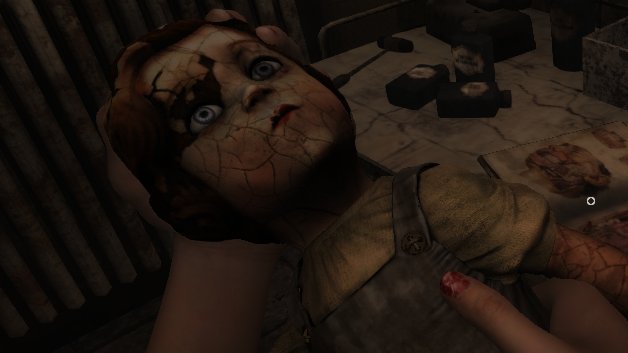Our Verdict
Uneven, bleak and unflinching. You won't enjoy it, but it's one of a kind.
PC Gamer's got your back
The Town of Light isn't an elegantly-made game—it has the unforthcoming quality of scar tissue, of painful ideas soldered haphazardly together—but it's among the few that left me feeling bereft for the character under my control. Not that Renée's fate is exactly yours to decide. A fictitious patient of the sadly non-fictional psychiatric hospital of Volterra in Tuscany, she has returned to the facility some years after its closure to make sense of her experiences. The most important events in the game have already happened by the time you lay your hands on the keyboard.
What is it: First-person narrative game set in an abandoned asylum, starring a former patient.
Publisher: LKA
Developer: LKA
Reviewed on: i5, GTX460M, 4GB RAM
Expect to pay: $19 / £13
Multiplayer: No
Link: Official site
You are tacitly cast as a voice in Renée's head, guiding her through peeling, faithfully recreated wards in search of objects or spaces that trigger memories—manifest as gothic hand-drawn storyboards and brief playable flashbacks, clouded by sedatives. In theory you're there to heal her mind, to re-enact long-buried events and loosen their grip on the present. There are a number of possible endings, depending on thoroughly you scour the place and the choices you make at certain intervals. But one thing that's established quite swiftly is that there's only so much or rather, little you can do.
Key to The Town of Light's accomplishment, I think, is the fact that it wasn't a game to begin with. Creative director Luca Dalcò had intended at first to create a virtual tourist exhibit, and this shows in the limited, clunky way you interact with the environment—picking things up, opening doors or windows and scanning documents such as anatomy books using an unresponsive, hard-to-see cursor. Progress is mostly a question of going where the voiceover tells you to go (you can always tap “H” for a hint): hallways and rooms unlock at scripted intervals and there are only a handful of very threadbare puzzles.

This much you might expect from so-called “walking simulators”, but comparable games come alive in the playfulness of the artefacts you uncover, in how they echo one another and keep you guessing. The Town of Light's props are few and inert, reflections of Renée's emotional paralysis: medical textbooks, old shoes, busted wheelchairs. They're the components of a plot, but they lack the specificity and implications of Gone Home's cassette tapes. The majority of the world's furnishings are cosmetic or useless—they simply exist, refusing to add up into anything greater than their sum, much as the plot refuses to offer consolation and catharsis.

The Town of Light offers three types of anti-aliasing, SMAA, FXAA and SSAA, and has settings for levels of ambient occlusion,grass and shadow density, along with texture quality and shadow or grass rendering distance. You can also adjust FOV between 55 and 65 and choose a refresh rate of 30, 60 or unlimited. The game supports up to 720p resolution.
So-called voyages of introspection in games are often suspiciously fluid affairs. Something is lost, something is found, and the character walks away rejuvenated if not always content. Thanks to its grounding in case history, The Town of Light's story is much choppier. Renée's tale is one of very infrequent hope and frequent regression, of personal demons incompletely understood, and of a backward cultural context she is powerless to change. In detailing her trials, the game resists the temptation to demonise the staff of the hospital out of hand: amongst the monsters you'll find good people made impotent by limited resources and an uncaring society. It's a convincingly uneven portrayal of an awful era in medicine, despite writing that occasionally teeters over into affectedness.
Where the game goes wrong is in resorting to tropes from the horror genre. At times the geometry twists, plunging you into hallucinatory spaces. There's the odd door that flies open without explanation, and the soundtrack mixes ambient noise with trickles of mournful piano in the tradition of Silent Hill. There are no jump-scares, and the surreal bits perhaps owe more to LKA's research on psychosis than repeat viewings of Jacob's Ladder, but extra care might have been taken in avoiding cliches. Far more appalling, though less showy, are the signs that the world at large has moved on. The truly terrible things in The Town of Light aren't the stone-faced orderlies pinning Renée down in the flashbacks, or the disembodied shrieks and cackles of other in-mates, but the scaffolds and bags of cement throughout the institution. Volterra is already being transformed, its history of suffering painted over and forgotten.
The Town of Light is an experience you endure rather than engage with. It is never fun, never challenging and evidently the work of an inexperienced and under-resourced team. But it also tackles the subject matter with a cold, fractured sophistication that exposes much, too-smooth, too-cohesive “psychological horror” as trivial. I had a dreadful time playing it. I want you to play it anyway.




Uneven, bleak and unflinching. You won't enjoy it, but it's one of a kind.


